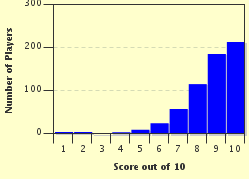Quiz Answer Key and Fun Facts
1. The skill of acrobatics has been entertaining audiences for centuries. In the art of which ancient culture have acrobats been portrayed performing their skills on the back of bulls?
2. Buskers were referred to by this term from approximately 1860 in European countries. Up until this time however, by which term were these street performers usually known?
3. Dancing is another of the performance arts, whose beginnings are impossible to date with any degree of accuracy. Of the following choices, what was one of the purposes of early dance?
4. Juggling has been around for several thousand years. During the decline of the Roman empire, however, this art was banned. Why was this?
5. Magic is another of those performing arts that has fascinated people for several thousand years. What is another name for a magician?
6. Opera is a performance skill described as art, architecture, music, theatre, text and materials are all combined to produce a story for an audience. In which country did opera, as we know it today, first begin?
7. Acting, the art of portraying a story by trained thespians to an audience, dates back to which era in history?
8. Is it true that the writer himself was once responsible for all aspects of any stage production of his works?
9. In the art of live performances, what was a stock character?
10. Which country gave birth to the art of ballet?
Source: Author
Creedy
This quiz was reviewed by FunTrivia editor
looney_tunes before going online.
Any errors found in FunTrivia content are routinely corrected through our feedback system.


